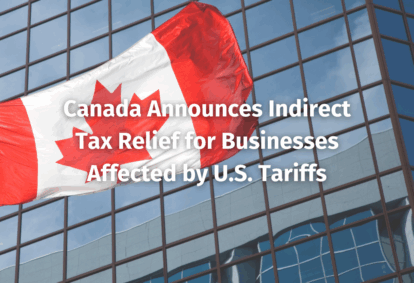What is e-invoicing?
What is e-invoicing?
E-invoicing (electronic invoicing) is a type of electronic bill issued or received in a prescribed format. It is another form of digitalisation or automation that has had a significant impact on VAT compliance and reporting requirements around the world.
This is not a new process or concept and we have already seen it used widely in public procurement (B2G) transactions. With B2G e-invoicing, there is some harmonisation of the processes across the EU. This is in the form of the e-invoicing Directive 2014/55/EU on electronic invoicing in public procurement.
By 2020, this was supposed to have been transposed by all EU Member States in their national legislation.
Overview of E-Invoice Requirements
E-invoices are issued and received in a structured electronic format that allows for automatic, electronic processing. There are certain requirements around specific information to be displayed to enable cross-border interoperability and ensure legal compliance.
The core elements include basic invoice information that you would expect on a B2B invoice:
- Process and invoice identifiers
- The invoice period
- Seller information
- Buyer information
- Payee information
- Seller’s tax representative information
- Contract reference
- Delivery details
- Payment instructions
- Allowance or charge information
- Invoice line item information
- Invoice totals
- VAT breakdown
The EU Commission requires that the European standard on electronic invoicing follows these criteria:
- Technologically neutral
- Compatible with relevant international standards on electronic invoicing
- Consistent with the relevant provisions of Directive 2006/112/EC
- Allows for the establishment of practical, user-friendly, flexible, and cost-efficient electronic invoicing systems
Why is E-invoicing on the rise?
As we’ve mentioned, e-invoicing is not new. There have been various forms of electronic invoicing systems for decades. However, increasingly we are seeing a more prevalent use of them across the globe.
So, why is that?
There are several reasons for the increased use of e-invoicing. The most common are:
- Control
- Visibility
- Automation
- Cost-saving (Businesses and government)
- Fight against VAT Gap
Reducing the VAT gap is a primary concern for tax authorities. In 2019, the VAT gap was an estimated €134 billion. This gap was due to fraud, VAT avoidance, as well as common human error and miscalculation. Tax authorities wish to overcome these through digitalisation and considerably reduce this loss.
There is evidence of significant decreases in the VAT gap in countries and regions that have already introduced mandatory B2B e-invoicing (e.g. Mexico, Chile, Brazil, Argentina, and Peru).
Latin American countries have been at the forefront of implementing mandatory e-invoicing regulations for more than a decade. These countries have implemented compulsory models for electronic issuance and submission of invoices affecting the vast majority of taxpayers.
While these are desirable goals, the various e-invoicing solutions adopted globally are a burden on businesses. This is due to various reasons including, unharmonized processes, initial set-up costs, and other compliance headaches (e.g. operating across multiple jurisdictions).
Benefits of E-Invoicing for Businesses
As mentioned, e-invoicing is mainly being used to fight against fraud and reduce the VAT gap. However, for business, there are a multitude of challenges associated with becoming compatible with these processes.
Likewise, there is a great many benefits to be gained, too. These benefits include:
- Faster execution of payments (improved cash flow). Data from the MEF (Ministry of Economy and Finance) show that the introduction of the electronic invoice has led to a reduction in average payment times, which have gone from 74 days in 2015 to 48 days in 2019.
- Reduced error through automation.
- More efficient and streamlined process (reduction in man-hours).
- Cost-saving.
- More secure way to operate.
One of the biggest ways that businesses benefit is through the integration achievable for companies between trading partners, their existing ERP system, and other internal systems. This integration frees up resources within the company to focus on other tasks while achieving a massive reduction, or complete elimination, of errors.
What is the e-invoicing Directive for B2G transactions?
The e-invoicing directive for B2G transactions is the requirement for a standardized European electronic invoicing system.
This would be limited to a ‘semantic standard of the e-invoice’. In other words, while EU law would indicate the set of data and fields to appear in such documents the infrastructure that enables creation, transmission, and archiving of e-invoices would be separate solutions and managed independently by providers across various countries.
Essentially, it gives each Member State a basis to the standard of e-invoicing but still allows flexibility in the individual approach to the process and so this creates again multiple varying obligations that businesses have to comply with.
What is the future of e-invoicing?
From a B2B standpoint, the future of e-invoicing is closely tied to the death of the traditional, manual invoice process.
We are likely to see continued growth and implementation of mandatory e-invoicing across the globe. Italy introduced mandatory B2B e-invoicing in 2019. Poland is set to introduce it from January 2023, with other EU countries such as France and Spain following suit. As mentioned throughout this article, there are numerous benefits for companies in this digitalising tax landscape.
However, a common lack of harmonisation in the processes means companies will need to remain agile to adapt to a diverse range of e-invoicing and real-time reporting requirements. They should therefore choose an interoperative and scalable digital platform that can adapt with changing regulations.
Stay Compliant with Taxback International
Understanding the evolving digital tax landscape is our top priority at Taxback International. Our newest technology platform – COMPLY – helps businesses manage complex, country-specific rules (e.g. MTD, SII, SAF-T) and ensure they stay compliant across multiple entities, multiple jurisdictions, and multiple tax deadlines.



